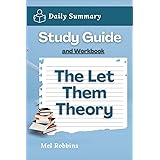Mastering the Real Estate Exam: 10 Essential Concepts You Must Know
To successfully pass your real estate exam, understanding core principles is absolutely critical. This accompanying article expands on the vital topics introduced in the video above. You will gain a deeper understanding of the foundational concepts necessary for a thriving real estate career. Mastering these key areas ensures you build a strong knowledge base for your real estate exam preparation.
Future real estate professionals must grasp these fundamental ideas. They are not merely exam questions; they form the bedrock of daily real estate practice. Let us dive deeper into these essential concepts for passing the real estate exam. This detailed guide offers crucial insights, helping you navigate complex real estate principles with confidence.
1. Real Property vs. Personal Property
The distinction between real property and personal property is a cornerstone concept for your real estate exam. Real property includes land and anything permanently attached to it. This means houses, trees, and fences are all considered real property. Personal property, conversely, is movable. It consists of items not permanently affixed to the land.
Imagine if you sell your home. Real property remains with the house. Personal property is taken by the seller. Keys, for instance, are personal property. A lease agreement is also categorized as personal property. It is a contract with a person, not the land itself. You must always remember: real property is immovable, personal property is movable.
2. Understanding Estates in Property
Knowledge of property estates is vital for your real estate license exam. There are two broad categories: freehold estates and less than freehold estates. Freehold estates denote ownership for an indefinite period. Less than freehold estates represent a limited duration of possession. These are essentially leasehold interests in property.
Four main types of less than freehold estates exist. First, an estate for years has a definite start and end date. Imagine a summer cottage rental from June 1st to August 31st. Second, periodic tenancy renews automatically, like a month-to-month lease. Third, an estate at will can be terminated at any time by either party. Finally, an estate at sufferance occurs when a tenant stays beyond their legal right, often called a holdover tenant.
Freehold estates involve actual ownership. Fee simple absolute grants the highest degree of ownership. It is not truly “absolute” due to government powers like taxation. Fee simple defeasible means ownership could be lost if a specific condition is violated. Imagine owning land on the condition you never sell alcohol there. A life estate grants ownership for the duration of a specified person’s life. Upon that person’s death, the property reverts to another party.
3. Government Powers (PETE)
Government powers significantly impact property ownership. Aspiring agents must understand these four key concepts, often remembered by the acronym PETE. PETE stands for Police Power, Eminent Domain, Taxation, and Escheat. These powers allow the government to regulate and, in some cases, take private property for public good.
Police power enables the government to enact laws for public health, safety, and welfare. Zoning laws, building codes, and rent control are examples. These regulations do not involve taking property. Eminent domain allows the government to take private property for public use. Just compensation must be paid to the owner, often determined through a condemnation process. Imagine a new highway needing to cross your land.
Taxation is the government’s right to levy taxes on property. Property taxes fund local services like schools and infrastructure. Escheat is the process where property reverts to the state. This occurs when an owner dies without a will and without any identifiable heirs. These four powers are crucial for comprehending how property rights are balanced with public interest.
4. Types of Property Ownership
Understanding different ownership structures is essential for the real estate exam. Property can be owned in two main ways: in severalty or concurrently. Ownership in severalty means one person or entity holds title. This is often the simplest form of ownership, with sole decision-making power.
Concurrent ownership means property is owned by two or more individuals simultaneously. Two common types are joint tenancy and tenancy in common. Joint tenancy requires the “four unities” – time, title, interest, and possession (T.I.P.P.). A key feature is the right of survivorship. Imagine if one joint tenant dies; their interest automatically passes to the surviving joint tenants. It cannot be willed away.
Tenancy in common, by contrast, only requires unity of possession. Owners can acquire their interests at different times and hold unequal shares. There is no right of survivorship. Imagine if a tenant in common dies; their share passes to their heirs, not the other co-owners. This difference in inheritance rights is a critical distinction for real estate professionals.
5. Essential Elements of Value (S.T.U.D.)
Real estate value is determined by several factors. The four essential elements of value are often remembered by the acronym S.T.U.D. (or D.U.S.T.): Scarcity, Transferability, Utility, and Demand. These elements interact to determine a property’s market value, a key concept for any real estate agent.
Scarcity refers to the limited supply of a property. A unique piece of land in a prime location is scarce. Transferability means the property can be legally bought and sold. Clear title and ease of conveyance are important. Utility means the property serves a useful purpose. A functional home has high utility.
Demand represents the desire and purchasing power of potential buyers. If many people want a property and can afford it, demand is high. All four elements must be present for a property to have value. Imagine a property with great utility but no demand; it would hold little market value. Understanding STUD helps agents analyze market conditions effectively.
6. Types of Depreciation
Depreciation impacts property value over time. There are three primary types of depreciation you must know for the real estate exam. These categories explain why a property might lose value: economic obsolescence, functional obsolescence, and physical deterioration. Each type has distinct causes and cures.
Economic obsolescence occurs from factors outside the property’s boundaries. It is often incurable. Imagine a new airport opening nearby, creating excessive noise. That external factor reduces the property’s desirability. Functional obsolescence arises from poor design or outdated features within the property itself. A five-bedroom house with only one bathroom is a classic example. This type of depreciation can sometimes be cured through renovation.
Physical deterioration is simply wear and tear. This includes things like a leaky roof or a crumbling foundation. It results from age, neglect, or lack of maintenance. Both curable and incurable physical deterioration can exist. Imagine a fresh coat of paint (curable) versus a completely rusted-out plumbing system (potentially incurable). Knowing these types helps appraisers and agents assess property condition accurately.
7. Appraisal Methods
Determining a property’s value involves specific appraisal methods. Three common approaches are used to estimate real estate value. These are the Market Data Approach, the Cost Replacement Approach, and the Capitalization Income Approach. Each method suits different types of properties or valuation scenarios.
The Market Data Approach, or Sales Comparison Approach, relies on comparable recent sales (comps). It is widely used for residential properties. Imagine finding three similar houses recently sold in the same neighborhood. Their sales prices would inform your property’s value. Adjustments are made for differences in features. This approach reflects what buyers are actually willing to pay.
The Cost Replacement Approach estimates the cost to rebuild a property new. This method is best for special-purpose properties like schools or libraries. These properties often lack comparable sales or income potential. Imagine calculating the current cost of labor and materials to construct an identical building. The Capitalization Income Approach converts future income into a present value. It is used for income-producing properties. Imagine an apartment building generating rental income; this method determines its value based on that income stream. Higher income typically suggests higher property value.
8. Deeds vs. Title
Distinguishing between a deed and a title is fundamental for the real estate exam. These terms are often confused but have distinct meanings. A deed is physical evidence of a property transfer. Title, on the other hand, represents actual ownership. You absolutely must know this difference.
A deed is a legal document. It conveys an interest in real property from one party to another. Imagine a piece of paper signed by the seller. This paper proves the transfer occurred. Title refers to the legal right to own and use the property. It is a concept, not a document. Imagine you hold the title; you possess all legal rights associated with ownership.
A deed provides evidence that title was transferred. It does not automatically grant title if the grantor had none to begin with. Title also encompasses a bundle of rights. These rights include possession, control, enjoyment, exclusion, and disposition. Grasping this distinction is crucial for understanding real estate transactions.
9. Liens on Property
A lien is a financial claim against a property. It serves as security for a debt or obligation. Liens signify that money is owed to someone. Future real estate agents must understand the two main categories: specific liens and general liens.
Specific liens attach to a particular piece of property. If the debt is not paid, only that specific property can be foreclosed upon. Examples include mortgages, property tax liens, and mechanic’s liens. Imagine a contractor performing work on your house. If unpaid, they can place a mechanic’s lien specifically on that house. Property taxes, if unpaid, also become a specific lien on the property.
General liens, by contrast, attach to all of a debtor’s property. This includes both real and personal property. Unpaid income taxes are a common example of a general lien. A judgment lien, resulting from a court ruling, also affects all of a debtor’s assets. Imagine losing a lawsuit; the court’s judgment could attach to all your property, not just one asset. Understanding lien types protects your clients from unexpected financial claims.
10. Fair Housing Laws
Fair Housing Laws are critical not only for passing the real estate exam but also for ethical practice. These laws prohibit discrimination in housing. The landmark Fair Housing Act was enacted in 1968, making it an important date to remember. It protects individuals based on race, color, religion, sex, national origin, familial status, and disability.
Several actions constitute fair housing violations. Steering involves guiding buyers to or away from neighborhoods based on protected characteristics. Imagine telling a family, “This neighborhood is best for people like you.” That is a violation. Blockbusting (also called panic peddling or panic selling) involves inducing homeowners to sell. This is often done by claiming that protected classes are moving into the area, creating fear and panic.
Redlining is discriminatory lending practices. Lenders might refuse to offer loans in certain neighborhoods based on the demographics of its residents. Imagine a bank drawing a “red line” on a map around a minority-heavy area, denying loans there. All these practices undermine equal housing opportunity. Adhering to Fair Housing Laws is a legal and moral obligation for every real estate professional, ensuring fairness and equity in the housing market.






